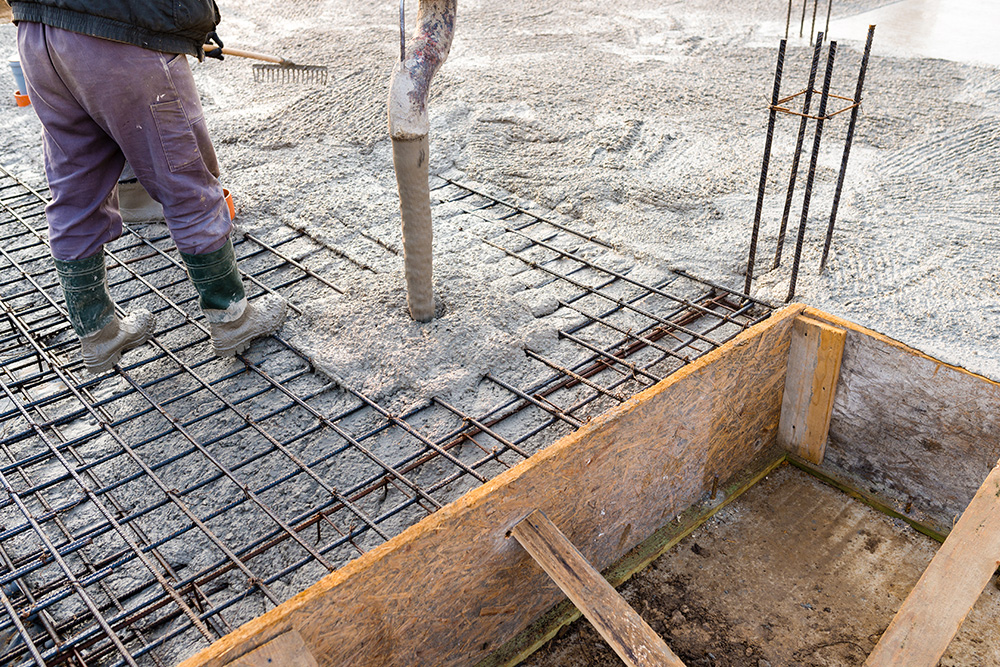
Building on weak or unstable soil can be a daunting challenge for any construction project. Poor soil conditions increase the risk of uneven settling, cracks in the structure, and even long-term damage to the building. However, with the right foundation solution, these challenges can be effectively addressed. At TUSRC, we specialise in using raft foundations to provide stability, even on weak soils, ensuring your building stands strong for generations.
Here’s how TUSRC helps clients overcome challenging soil conditions with expertly designed and installed raft foundations.
1. Understanding Raft Foundations: The Ideal Solution for Weak Soils
Raft foundations, also known as mat foundations, are large, continuous slabs that spread the weight of a building evenly across a broad area. Unlike traditional foundations that use individual footings for each load-bearing wall or column, a raft foundation provides full support under the entire structure. This even distribution is particularly beneficial on weak or variable soils, where concentrated loads could lead to sinking or uneven settling.
At TUSRC, we understand the unique demands of weak soil conditions and design custom raft foundations that provide the stability needed to support your project, regardless of the challenges posed by the ground below.
2. Expert Soil Assessment and Custom Solutions
Every successful foundation begins with a thorough understanding of the site’s soil conditions. At TUSRC, we conduct comprehensive soil surveys and assessments to evaluate the strength, composition, and behaviour of the ground where your building will stand. This process allows us to identify areas of concern, such as soft or clay soils, which are prone to shifting and settling.
Based on this detailed analysis, we design a raft foundation that suits the specific characteristics of your site. Our tailored solutions ensure that the weight of the building is evenly distributed, preventing localised pressure points that could lead to sinking or structural instability.
3. Distributing Loads Evenly Across the Entire Structure
Weak soils struggle to support concentrated loads, such as those imposed by traditional foundation footings. Raft foundations, however, spread the load across a much larger area, significantly reducing the stress on any one part of the ground. This even distribution minimises the risk of differential settlement, where parts of the building settle at different rates, causing cracks and damage to the structure.
By using raft foundations, TUSRC ensures that the entire building rests on a solid, stable platform, even when the underlying soil is less than ideal. This design approach not only provides immediate stability but also reduces the risk of long-term issues, such as uneven settling or foundation failure.
4. Adapting to Variable Soil Conditions
In some cases, the soil conditions across a site may vary significantly. One section of the ground may be firm and stable, while another may be soft and prone to settling. These variations can present significant challenges for traditional foundation methods, which rely on uniform ground conditions.
TUSRC’s raft foundation solutions are flexible enough to adapt to these variable soil conditions. By distributing the load across the entire site, we ensure that the building remains stable even in areas with weaker soil. Our team carefully monitors the design and construction process to account for any fluctuations in soil quality, ensuring consistent support throughout the structure.
5. Preventing Settlement and Structural Damage
One of the most common problems associated with building on weak soil is differential settlement, where different parts of a building settle at different rates. This can lead to cracks in walls, uneven floors, and even major structural issues. Raft foundations, with their ability to spread the load evenly, significantly reduce the risk of differential settlement.
TUSRC’s expertise in raft foundations ensures that your building remains level and stable, preventing the long-term damage that can result from uneven settling. By investing in a high-quality raft foundation from the start, you’re safeguarding your project from costly repairs and structural problems in the future.
6. Expert Installation and Quality Assurance
At TUSRC, we don’t just design the perfect raft foundation, we also ensure it is installed to the highest standards. Our team of experienced professionals takes great care during the construction phase to ensure that every aspect of the raft foundation is executed with precision. We use high-quality materials and advanced construction techniques to ensure the foundation’s durability and stability.
Throughout the process, we maintain strict quality control measures, ensuring that your raft foundation meets both industry standards and our own high expectations. This attention to detail gives you peace of mind, knowing that your building is supported by a foundation designed and built to last.
Conclusion
Weak or unstable soil doesn’t have to be a roadblock to your construction project. With TUSRC’s expert raft foundation solutions, we ensure that your building is supported by a solid, stable foundation, regardless of soil conditions. Our custom-designed raft foundations, combined with our comprehensive soil assessments and precision installation, provide the stability your project needs to thrive. Ready to secure a strong foundation for your project? Contact TUSRC today to learn more about how our raft foundation solutions can help overcome challenging soil conditions and ensure the long-term stability of your building.











Comments (0)